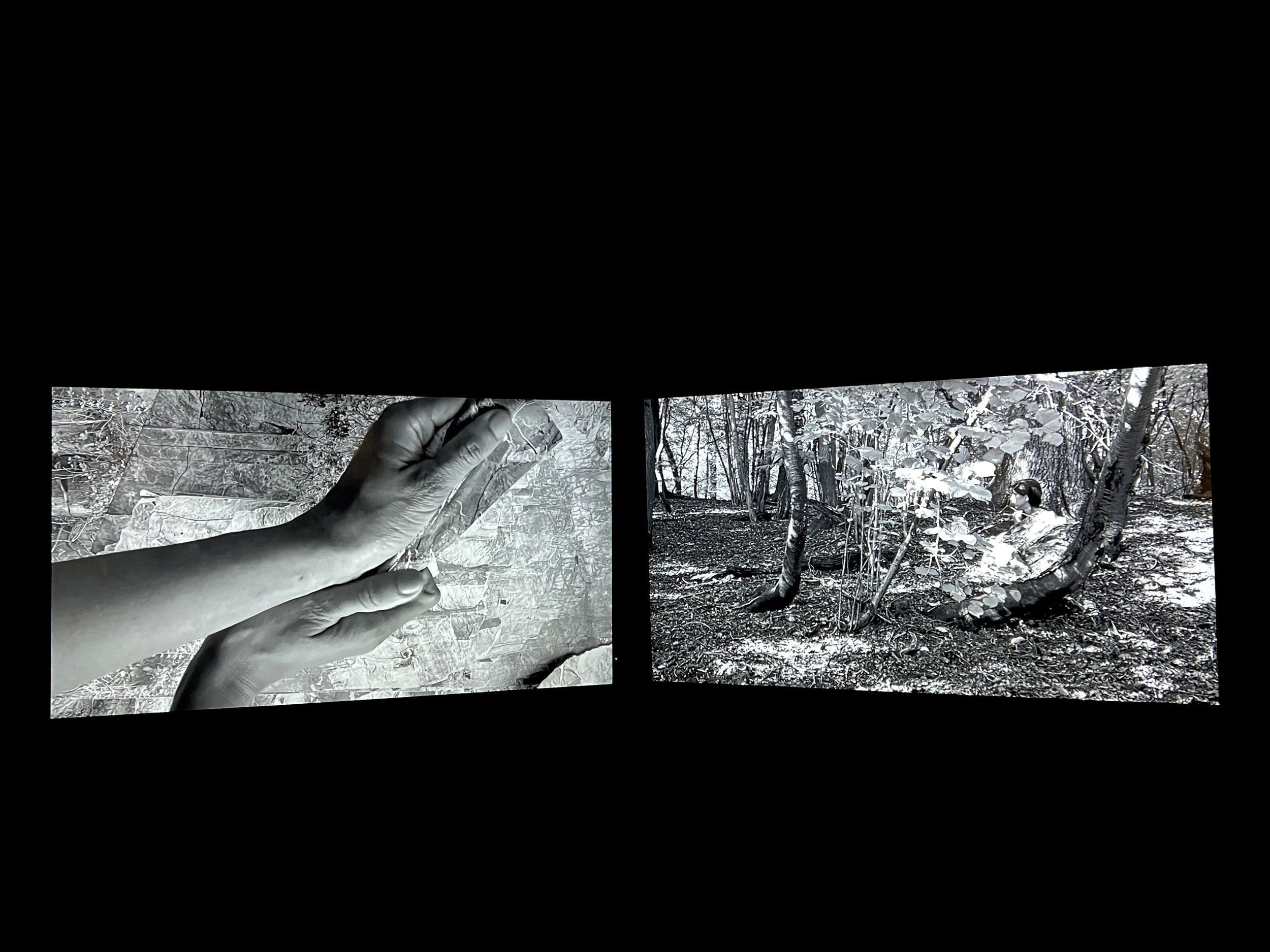Geohaptics: In Touch with Morley Quarry (2023)
The rocks of Morley Quarry are amongst the oldest in England. Stepping amongst them seems to mute the surface, soil-level politics. The human as the primary narrator seems to dissolve in the presence of this ancestral, elder material. “Rock” is often a metanonym for something hard, rigid, immovable and unchanging but these rocks are a residue, a reminder of the heaving, oozing dynamic under-earth that has shaped and continues to shape the tomorrow's of the Earth. These extraordinary geologic bodies are crumpling, crushing, tilting, tearing, squashing and folding into shapes at a pace imperceptible to the human gaze. These verbs make these bodies feel dynamic, connected, relatable.
Perhaps, in a time where many of us need to rebuild our broken relationship with a broken earth, touching and feeling might offer one strategy for dissolving the boundaries that might be estranging ‘rock’ bodies from ‘human’ bodies. Perhaps it will invite us to engage with a different type of relationship with our ecology and help us recognise or come into closer contact with “more-than-human forces” (Shouhei, 2023). Writer and poet Erin Robinsong offers “geohaptics” as a word to capture the intimacy we might feel when we are invited to think of our human bodies as the matters we will eventually become (earth, water, mineral). This could be described as a form of “sensuous geography” (Rodaway and Serres, 2008) where the planet becomes a “sensate archive whose histories, materialities, and vitalities are made legible through touch.”
I generated three moving image gestures, or ‘rough cuts’ contemplating the movement inherent in the ongoing shaping of these deep rocks and the intimate contact invoked between these rock bodies and my own. Paper photography became a way of playing with these dynamic verbs; coming into contact with these ancient rocks at a distance and performing with the material. The seemingly inert rocks of the site and the paper are suddenly reanimated through my bodily and sensorial engagement with it. They are an invitation to recognise the geologic in yourself and think about how we might want to be in relation to the ancient matters of the places we call ‘home’.
This work was created in response to an invitation from RADAR Loughborough Arts and will be exhibited to the public in Charnwood Geo Forest Park in January 2024.

(1) Tectonic Touch imagines and rehearses the shaping and dynamism of the Earth through the hands.
(2) In Present-Past my body is sculpted, contorted and cast onto the rock body through shadow
(3) Charnwood to Scratchwood recognises that the deep geology under the British Isles surrounds and connects us together wherever we are. Back home in London, cloaked in textures of Charnwood, I created a series of stills, being still in Scratchwood, an extraordinary space where the Atlassian glacier melted.